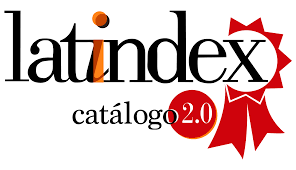Sulfur dioxide (SO2) levels in the air of the city of Tingo María comparing two modified methods
DOI:
https://doi.org/10.55996/dekamuagropec.v2i2.56Keywords:
Visible spectrophotometry, modified methods, passive capturer, active capturer, gas capturerAbstract
The objective of this research was to evaluate two modified methods to determine sulfur dioxide (SO2). The sampling was carried out in five representative zones of the city of Tingo Maria through the sampling train and Palmes tubes, the analyses were carried out in the environments of the Laboratory of the Biotechnological Research Center of the Amazon at the National Agrarian University of the Jungle, in the District of Rupa Rupa, Department of Huanuco. The results indicate that the method proved to be linear (r2 = 0.996), accurate (CV < 11 %), sensitive (LOD = 0.028 ug or 0.933 ug/m3 and LC = 0.93 ug or 3.100 ug/m3) and robust (P-value > 0.05). According to the results of the method performance, the proposal of method FIF-19029417 was elaborated to determine SO2 by visible spectrophotometry according to NTP - ISO/IEC 1725 (2006). In the determination of SO2 it was observed that, during the evaluation, SO2 levels are well below the limit established by the RCTs and the WHO guide, finally the concentrations obtained using the passive sampler versus the active sampler, provided excellent correlations between both sampling methods (r2 ≥ 0.90).
Downloads
References
Aefi. 2001. Validación de métodos analíticos y control de calidad. p. 22 –25.
Aoac. 2001. Procedimientos de estudio para la validación de métodos químicos oficiales. 10 ed. p. 40 –41.
ATM-E-ED-07. 2011. Evaluación de las emisiones difusas mediante la utilización de captadores pasivos. 19 p.
Bennett, F., Briggs, W., Triola, M. 2011. Razonamiento estadístico. México, D.F. p. 4 –6.
Bernard, N., Gerber, M., Astre, C. 2005. Medición de SO2con muestreadores pasivos y activos: validación y uso para la evaluación de la contaminación por SO2 en Montpellier, Francia. Environmental Science y Technology, 33(2): 217 -22
Boque, R., Maroto, A., Rius, F. 2002. Validación de métodos analíticos: Grasas y aceites. p. 128 –143.
Cabrera, C., Maldonado, M., Arévalo, W., Pacheco, R. 2010. Calidad del aire mediante el uso de gas natural en Lima y Callao. [En línea]: CALIDDA, (www.calidda.com.pe/documentos/aire.pdf, documentos, 05 de febrero del 2017).
DIGESA, D. 2009. Estudio de la calidad del aire de la ciudad de Lima Metropolitana. [En línea]: DIGESA, (www.digesa.sld.pe/aire/pdf/ecal2009. pdf, documentos, 04 de febrero del 2017).
EPA, E. 2010. Determination of mass concentration of sulfur dioxide in the atmosphere: Method Pararosaniline. 32 p.
Galan, D., Fernandez, R., Diaz., E. 2001. Estudio de las concentraciones superficiales de NO2, SO2 y O3 en la atmosfera de la comunidad de Madrid mediante muestreadores pasivos y activos. Revista de salud ambiental, 1(1): 20 –29.
Gutierrez, H., de la Vara, R. 2008. Análisis y diseño de experimentos. México, D.F. Mac Graw Hill. p. 120.
Hernandez, L., Gonzales, C. 2002. Introducción al análisis instrumental. Barcelona, España. 45 p.
IUPAC. 2002. Nomenclature in evaluation of analytical methods including detection and quantification capabilities. Gran Bretaña. p. 79 –83.
Mosquera, D. 2012. Estandarización de un método para la cuantificación de pesticidas organoclorados y organofosforados en suelos por cromatografía de gases detectores. Tesis Ing. Biotecnología. Pereira, Colombia. Universidad Tecnológica de Pereira. 79 p.
NTP –ISO/IEC 1725. 2006. Requisitos Generales para la Competencia de los Laboratorios de Ensayo y Calibración.
OMS. 2006. Guías de la calidad del Aire de la OMS relativas al material particulado, el ozono, el dióxido de nitrógeno y el dióxido de azufre. Ginebra, Suiza. 86 p.
Quesada, S. 2007. Manual de experimentos de laboratorio para bioquímica, en espectrofotometría. Costa rica. 9 p.
Quispe, K., Ñique, M., Chuquillin, E. 2014. Líquenes como bioindicadores de la calidad del aire en la ciudad de Tingo María, Perú. RevIA, 3(2): 99 –104.
Sierra, I., Perez, D., Morante, S. 2010. Análisis instrumental: parámetros de desempeño de un método. España. 20 p.
Published
How to Cite
Issue
Section
License
Copyright (c) 2022 Fresia Inga Fernández, Víctor Beteta Alvarado, Manuel E. Reátegui-Inga

This work is licensed under a Creative Commons Attribution-NonCommercial 4.0 International License.
Los autores que publican en esta revista aceptan los siguientes términos:
- Los autores conservan los derechos de autor y conceden a la revista el derecho publicación con la obra, simultáneamente licenciada bajo una licencia de Creative Commons CC By que permite a otros compartir el trabajo, pero citando la publicación inicial en esta revista.
- Los autores pueden celebrar acuerdos contractuales adicionales separados para la distribución no exclusiva de la versión publicada de la obra de la revista (por ejemplo, publicarla en un repositorio institucional o publicarla en un libro), pero citando la publicación inicial en esta revista.
- Se permite y anima a los autores a publicar su trabajo en línea (por ejemplo, en repositorios institucionales o en su sitio web) antes y durante el proceso de presentación, ya que puede conducir a intercambios productivos, así como una mayor citación del trabajo publicado (https://web-archive.southampton.ac.uk/opcit.eprints.org/oacitation-biblio.html)















